Proudly standing across the Red River for over a hundred years, Long Bien Bridge, for generations of Hanoians, has been an iconic feature of the capital. Seasons come and go, but the bridge is still there to witness the changes to a city that rose up from bombs and bullets.
The bridge across the Red River was designed and built by French firm Daydé-Pillié in September 1898. It opened to traffic in 1902, running more than 1,691 meters long, with a rail track in the middle and road transportation on either side. During the Vietnam War (1955-1975), the bridge had some of its parts damaged and even destroyed by enemy bombing. The Vietnamese government fixed the damage, building the spans that are in use until today.
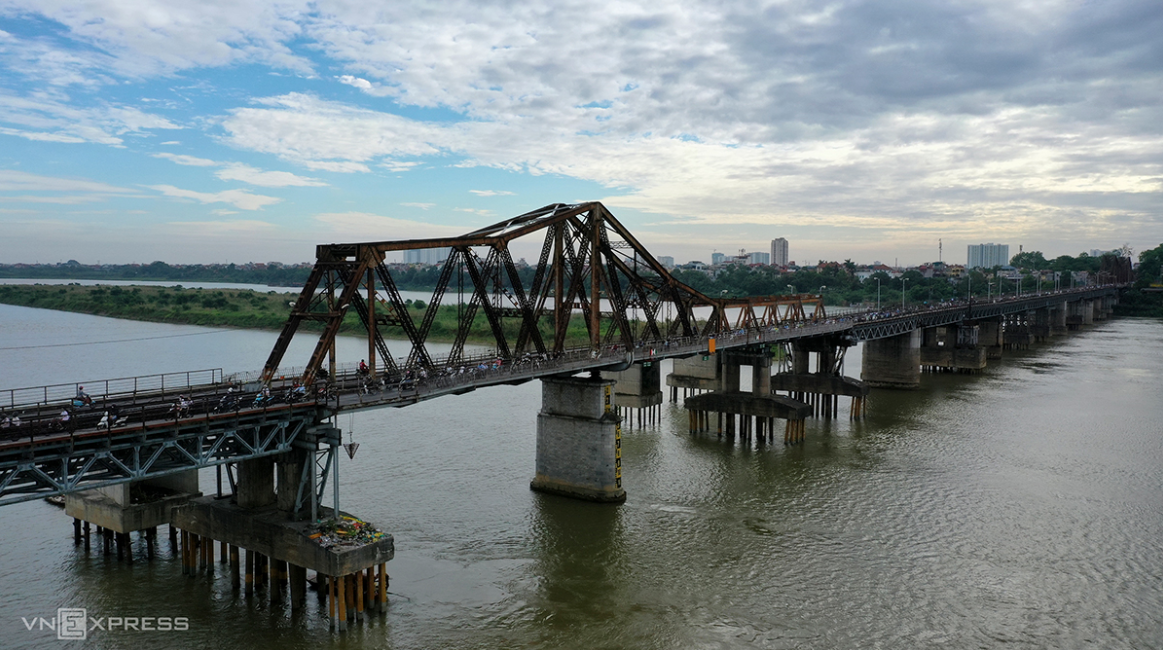 |
| Photo: VN Express |
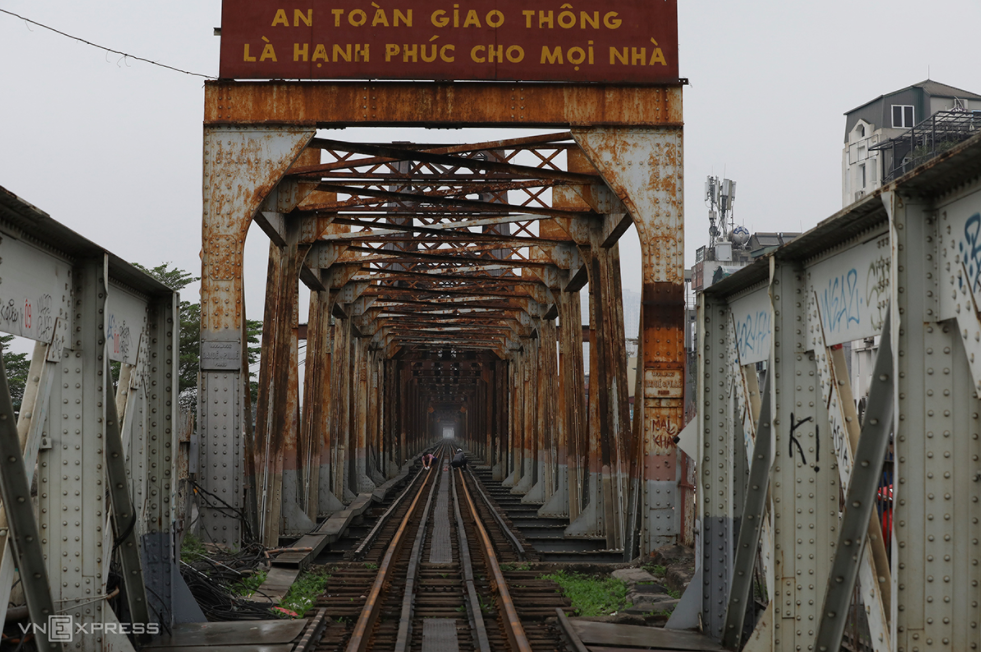 |
| Photo: VN Express |
Workers of Hanoi-based Ha Hai Railways Co. maintain a section of the bridge a few days ago. The company was assigned the task of managing, operating, and preserving the bridge by the Vietnam Railways Corporation (VNR) in 1986. The firm’s deputy director, Ta Quang Son, said that each year, maintenance work is done four times, including removing rusted parts and repainting them, replacing rusty and loose sleepers and screws, and cleaning the bridge.
Despite the regular maintenance, however, the bridge carries worsening signs of wear and tear. In the 1995-2010 period, VNR spent VND116 billion ($5 million) repairing the bridge. In 2015, the government allocated VND300 billion from the state budget for a large-scale preservation project for the bridge, according to VN Express.
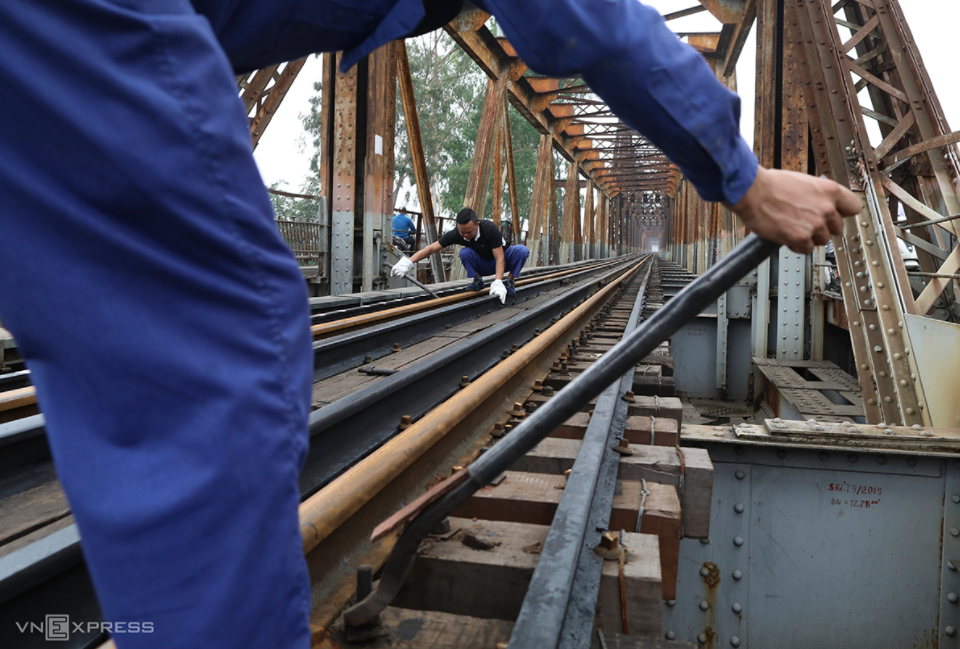 |
| Photo: VN Express |
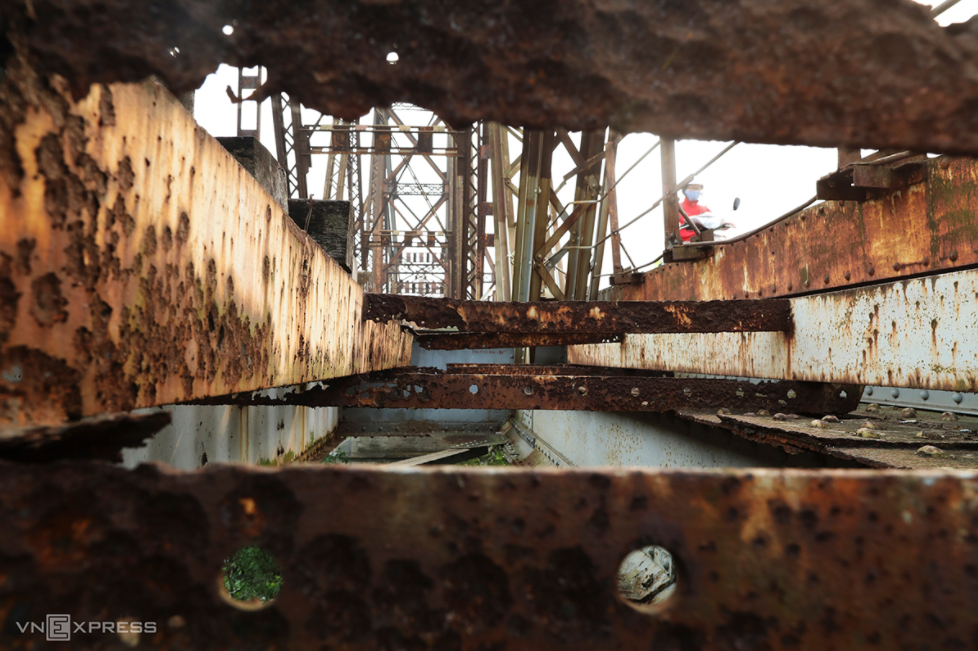 |
| Photo: VN Express |
Ha Hai Railways said fixing the roads was part of the company’s maintenance plan for the first quarter; and work on it has basically been completed. Railway employee Nguyen Manh Thang, 51, patrols the bridge every day, said “I have to check every detail from the track to screws and sleepers and report to higher authorities. The bridge is really old now, so it has to be inspected regularly.
However, due to urban developments along the banks of the Red River, thousands of motorbikes and bicycles cross the bridge during peak hours every day. Trains use the bridge around 20 times per day.
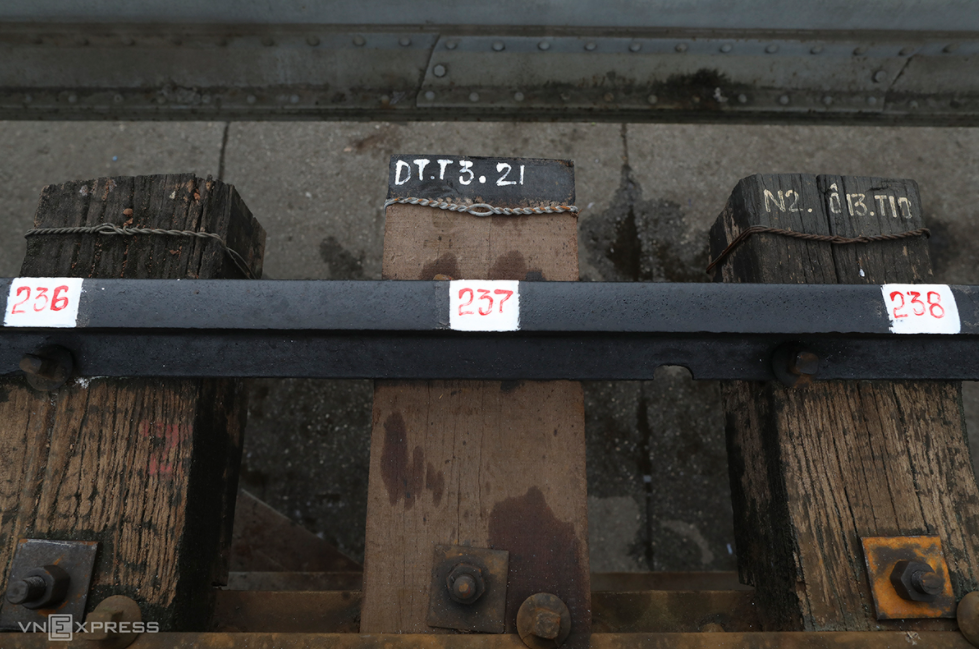 |
| Photo: VN Express |
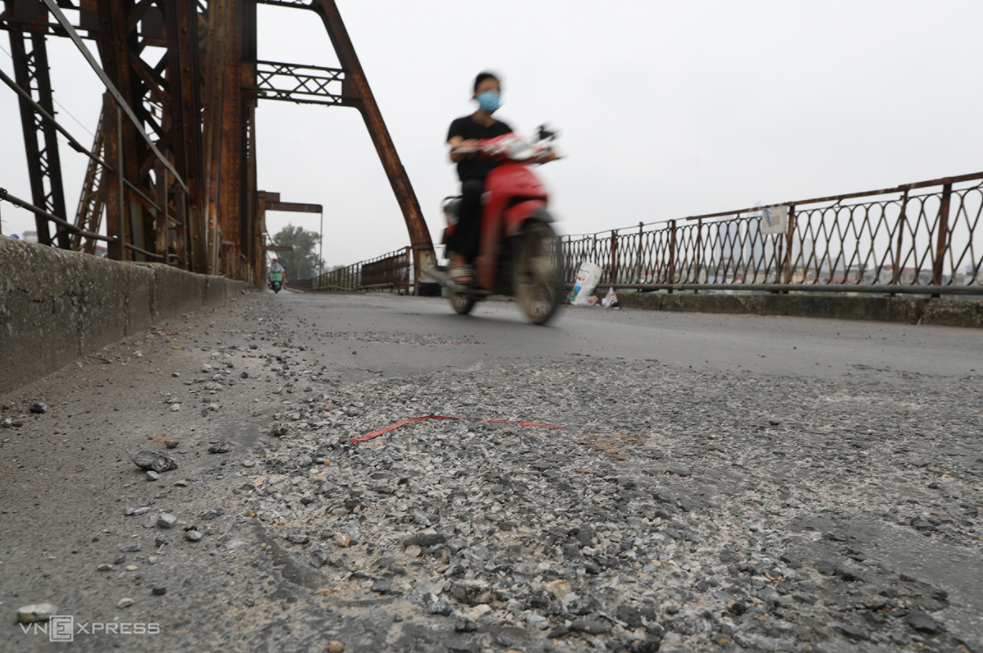 |
| Photo: VN Express |
On April 1, French Ambassador to Vietnam Nicolas Warnery said the government of France wanted to make a significant contribution to rehabilitating Long Bien Bridge at a meeting with the Chairman of the Hanoi People’s Committee Chu Ngoc Anh. Renovating the bridge will highlight the historic monument of Vietnam and Hanoi in particular, he stressed.
Chu Ngoc Anh said restoring symbolic cultural heritages is set among the city’s long-term strategies to maintain the image of the thousand-year-old city, Hanoitimes cited.
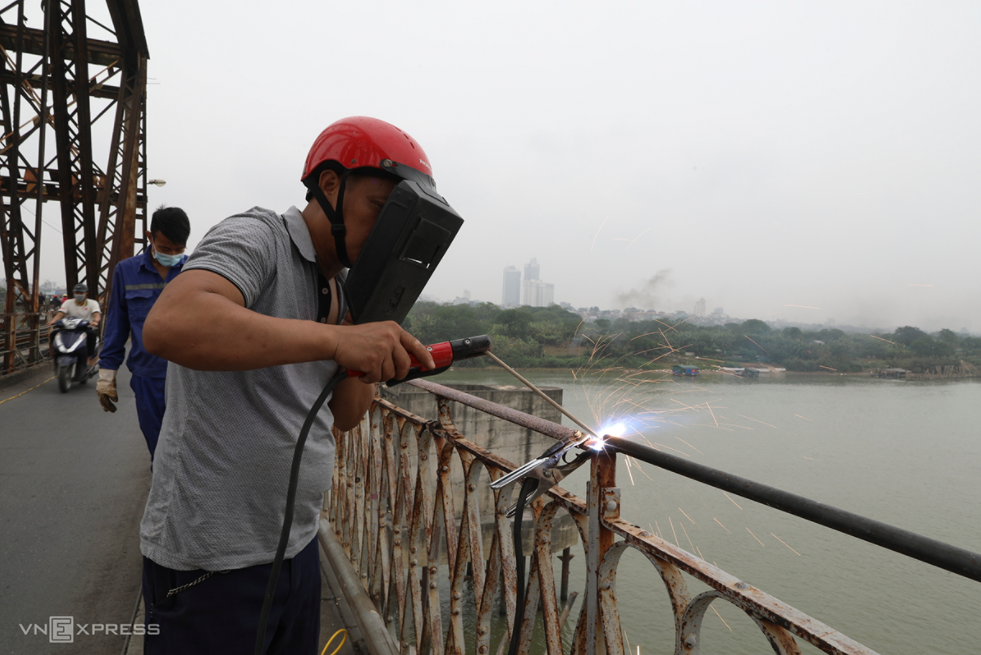 |
| Photo: VN Express |
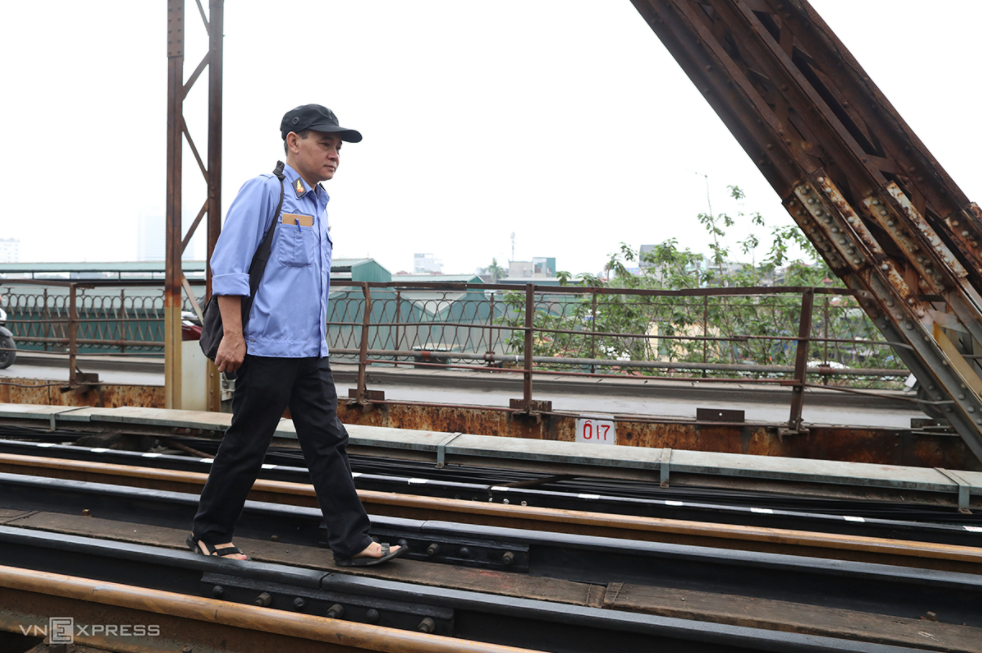 |
| Photo: VN Express |
With a rail track and two road lanes, the bridge measures 1,680m between abutments and originally comprised 19 spans, alternately 106m and 75m long, making it, at the time of construction, the longest cantilever suspension bridge in the world, said Vietnamnet.
As the main transport link to Hanoi, Long Bien Bridge was heavily bombed throughout the Vietnam War. The bridge was torn apart from time to time, but just like the fearless Vietnamese spirit, it came back stronger and is still standing tall until today.
Hanoi tried to remove Long Bien Bridge in 2014 saying it does not meet the safety requirements for traffic, only to be met with heavy objection from the public. In a city that is developing at the speed of light, Long Bien Bridge is a rare piece of treasure from the past. The destruction of the bridge is simply a crime against the heroic history of Vietnam.
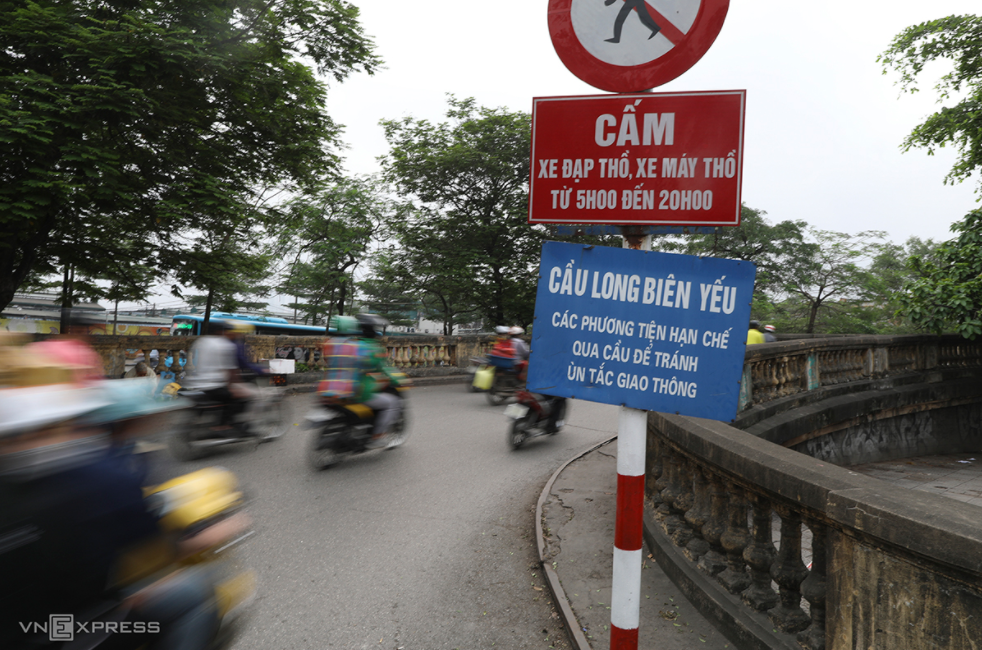 |
| Photo: VN Express |
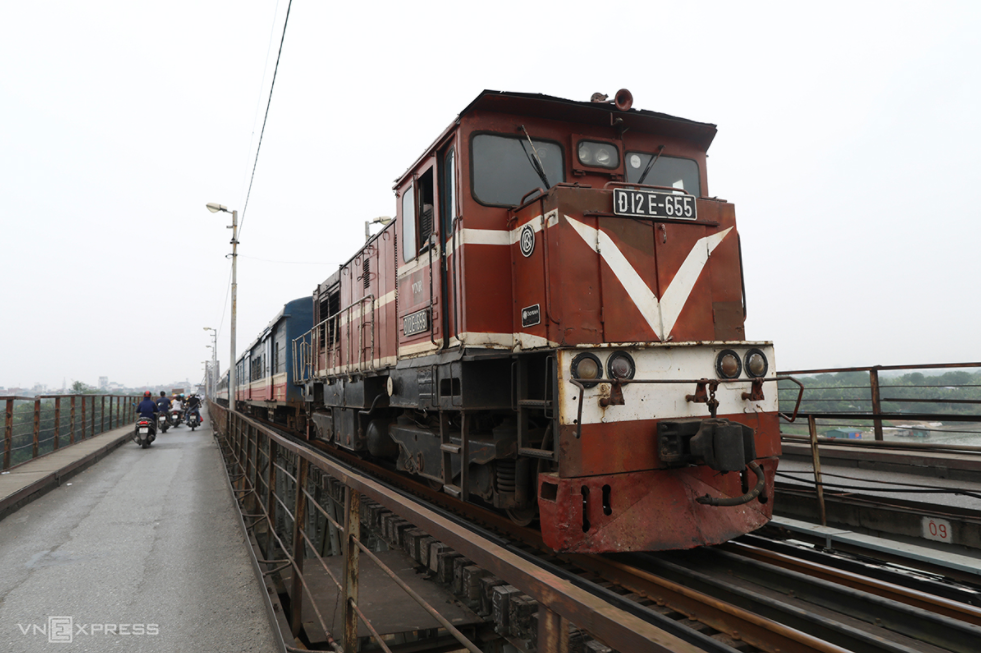 |
| Photo: VN Express |



